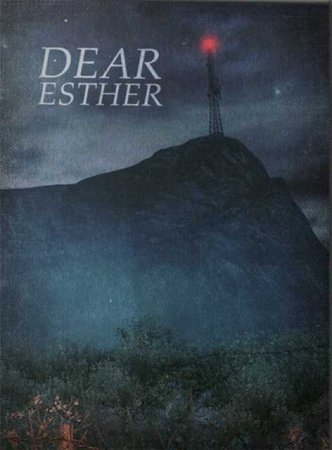

mikem52 reviewed: Beyond a Steel Sky (Nintendo Switch).lukezeppo reviewed: Digimon Survive (Nintendo Switch) (PlayStation 4).
Dear esther reviews series#
lukezeppo reviewed: Klonoa Phantasy Reverie Series (Nintendo Switch).Sandy Wilson reviewed: Wanted: Dead (PC).lukezeppo reviewed: Tormented Souls (PlayStation 5).Azuardo reviewed: Theatrhythm Final Bar Line (Nintendo Switch).Sandy Wilson posted article: Shin’en Interview: The Punchuin, 2D Wario, FAST RMX vs F-Zero and More!.jb reviewed: Kirby's Return to Dream Land Deluxe (Nintendo Switch).LillySwifty posted article: Review: Hogwarts Legacy.The commentary spoils a few particularly great moments.

However, like any other audio commentary, it's best to play through the game at least once or twice before listening. For fans, finding every piece of discussion is a worthwhile venture. They offer a lot of insight into how Dear Esther was designed, as well as the thought process that went into creating its most interesting elements. New to the console release is commentary by Robert Briscoe (artist), Dan Pinchbeck (writer) and Jessica Curry (composer).


Attempting to fill in the blanks is what gives it its lasting value. This is a game that was explicitly designed for players to be lost, sometimes even after reaching the end. There isn't any meaningless padding, nor does the narrator exposit to the point where all of the mystery is revealed. Completing the story shouldn't take more than two hours. To its credit, this game doesn't try to be anything more than it is. The constant theme of Dear Esther is solitude, so anything that someone is thinking or feeling is brought to the forefront. However, there really isn't much to do while walking through an island in the Hebrides. Since games usually require a lot of interactivity - such as the aforementioned punching, jumping, and puzzle-solving - the player is distracted. When somebody approaches a video game, they do so with all of their current thoughts and emotions, which can affect the experience. It might be because there isn't enough of an impact to draw them in. However, that doesn't necessarily mean that the player is wrong. If the player doesn't open their mind, then the audio-visual imagery is lost on them. These diametrically opposed viewpoints are both right, and that's the wonder of opinions. One person will believe that it's an emotionally powerful and a significant achievement, whilst another person will be bored to tears. No two people are going to look at Dear Esther the same way. All too often, reviewers use statements such as, "It's not for everyone," and "It's what you make of it." Unfortunately, there really isn't a better description. These are subtle, as in not enough to overtake everything else that is happening, but they'll get the player's attention.Īs for the game itself, or rather, the gameplay, there is very little to be said. There are other, more unsettling, noises that can also be heard. During the times when there isn't any music, the sounds of running water, as well as the howling of the wind, capture the dour atmosphere. Jessica Curry's music perfectly suits every moment, even when spending an inordinate amount of time in a single location. The award-winning sound design is also worthy of mention. The frame rate is a constant 60 fps, the image quality is great, and there aren't any glitches in the scenery. Curve Digital did a remarkable job with the console port. Each chapter has a consistent look, and some locations are positively striking. Everything from the lighting to the composition is extremely well done. After all, there aren't any elements to catch the eye, such as enemies, objects to collect, or even a user interface. Since the entirety of Dear Esther is spent walking and looking, it's natural to expect great visuals.


 0 kommentar(er)
0 kommentar(er)
